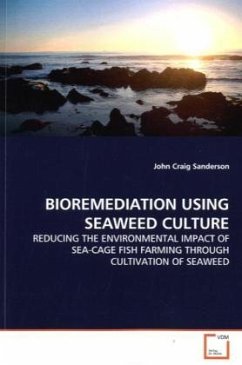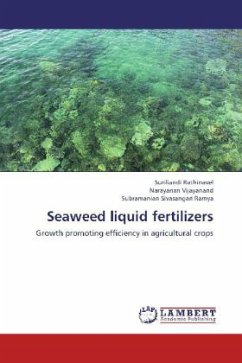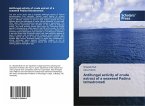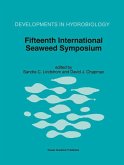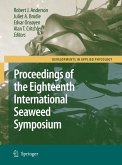The rapid growth in sea-cage fish farming in the UK,
particularly in Scotland and Ireland, and the extent
to which intensive aquaculture results in degradation
of the surrounding environment has been the subject
of continued speculation and investigation. Growing
seaweed crops is a possible means of reducing
possible environmental impact through utilisation of
excess nutrients. Cultivation of two seaweed species
with commercial potential: Laminaria saccharina and
Palmaria palmata or Dulse was trialled at three
fish farm sites in north-west Scotland. Yields were
greater close to fish farms and showed that under
optimal conditions, a hectare of P. palmata would
yield up to 180 tonnes and a hectare of L. saccharina
220 tonnes wet weight per annum which would be the
equivalent of at least 13 % and 5 % of the nitrogen
respectively emitted from the production of 500 tonne
of salmon over the two year period the salmon are at
sea. This book reviews seaweed and fin fish culture
and related nutrient dynamics in cool temperate
waters and would be of interest to environmentalists
and those considering fish and or seaweed aquaculture.
particularly in Scotland and Ireland, and the extent
to which intensive aquaculture results in degradation
of the surrounding environment has been the subject
of continued speculation and investigation. Growing
seaweed crops is a possible means of reducing
possible environmental impact through utilisation of
excess nutrients. Cultivation of two seaweed species
with commercial potential: Laminaria saccharina and
Palmaria palmata or Dulse was trialled at three
fish farm sites in north-west Scotland. Yields were
greater close to fish farms and showed that under
optimal conditions, a hectare of P. palmata would
yield up to 180 tonnes and a hectare of L. saccharina
220 tonnes wet weight per annum which would be the
equivalent of at least 13 % and 5 % of the nitrogen
respectively emitted from the production of 500 tonne
of salmon over the two year period the salmon are at
sea. This book reviews seaweed and fin fish culture
and related nutrient dynamics in cool temperate
waters and would be of interest to environmentalists
and those considering fish and or seaweed aquaculture.

